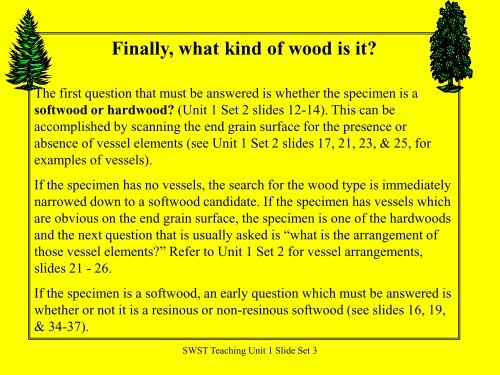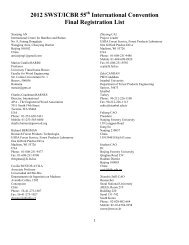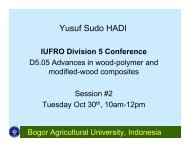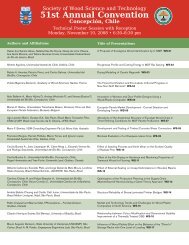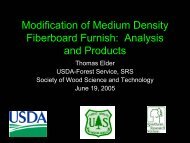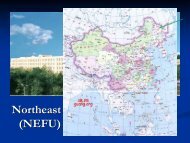Wood Identification - Society of Wood Science and Technology
Wood Identification - Society of Wood Science and Technology
Wood Identification - Society of Wood Science and Technology
You also want an ePaper? Increase the reach of your titles
YUMPU automatically turns print PDFs into web optimized ePapers that Google loves.
Finally, what kind <strong>of</strong> wood is it?<br />
The first question that must be answered is whether the specimen is a<br />
s<strong>of</strong>twood or hardwood? (Unit 1 Set 2 slides 12-14). This can be<br />
accomplished by scanning the end grain surface for the presence or<br />
absence <strong>of</strong> vessel elements (see Unit 1 Set 2 slides 17, 21, 23, & 25, for<br />
examples <strong>of</strong> vessels).<br />
If the specimen has no vessels, the search for the wood type is immediately<br />
narrowed down to a s<strong>of</strong>twood c<strong>and</strong>idate. If the specimen has vessels which<br />
are obvious on the end grain surface, the specimen is one <strong>of</strong> the hardwoods<br />
<strong>and</strong> the next question that is usually asked is “what is the arrangement <strong>of</strong><br />
those vessel elements?” Refer to Unit 1 Set 2 for vessel arrangements,<br />
slides 21 - 26.<br />
If the specimen is a s<strong>of</strong>twood, an early question which must be answered is<br />
whether or not it is a resinous or non-resinous s<strong>of</strong>twood (see slides 16, 19,<br />
& 34-37).<br />
SWST Teaching Unit 1 Slide Set 3


